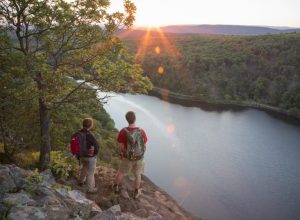Preserving the Rich Biodiversity of Ngorongoro Conservation Area
The Ngorongoro Conservation Area, located in northern Tanzania, is a UNESCO World Heritage Site known for its stunning landscapes and diverse wildlife. Spanning over 8,000 square kilometers, this area is home to a wide variety of plant and animal species, making it one of the most biodiverse regions in Africa. It is crucial to conserve the rich biodiversity of Ngorongoro to ensure the survival of these unique ecosystems for future generations.
Importance of Conserving Ngorongoro’s Biodiversity
The biodiversity of Ngorongoro Conservation Area plays a vital role in maintaining the ecological balance of the region. The different plant and animal species in this area are interconnected, forming complex food chains and ecosystems that are essential for the survival of all living organisms. By conserving the biodiversity of Ngorongoro, we are not only protecting the wildlife and vegetation found here but also preserving the overall health of the entire ecosystem.
Furthermore, the Ngorongoro Conservation Area is a significant tourist destination, attracting thousands of visitors each year who come to witness the beauty of its landscapes and wildlife. The preservation of biodiversity in this area is essential for the continuation of sustainable tourism practices that benefit both the local communities and the environment. By conserving the rich biodiversity of Ngorongoro, we can ensure that future generations can continue to enjoy and appreciate the natural wonders of this unique region.
Strategies for Preserving the Area’s Rich Ecosystems
Preserving the biodiversity of the Ngorongoro Conservation Area requires a multi-faceted approach that addresses the various threats facing the ecosystems in this region. Some of the strategies that can be implemented to ensure the conservation of Ngorongoro’s rich biodiversity include:
-
Sustainable Tourism Practices: Tour operators, such as Sunset Africa Safari, play a crucial role in promoting sustainable tourism practices that minimize the impact on the environment. By organizing responsible tours and educating visitors about the importance of conservation, tour operators can help protect the biodiversity of Ngorongoro.
-
Community Involvement: Engaging local communities in conservation efforts is essential for the long-term preservation of Ngorongoro’s biodiversity. By providing training and employment opportunities in ecotourism and sustainable agriculture, communities can become active participants in conservation activities.
-
Habitat Restoration: Protecting and restoring the natural habitats within the Ngorongoro Conservation Area is crucial for maintaining the biodiversity of the region. Efforts to control invasive species, prevent deforestation, and restore degraded ecosystems can help preserve the rich diversity of plant and animal species found in this area.
In conclusion, the conservation of the rich biodiversity of Ngorongoro Conservation Area is essential for maintaining the ecological balance of this unique region. By implementing strategies such as sustainable tourism practices, community involvement, and habitat restoration, we can ensure that the diverse ecosystems of Ngorongoro continue to thrive for generations to come. For booking requests to experience the beauty of Ngorongoro, clients can contact Sunset Africa Safari at info@sunsetafricasafari.com.


